Agriculture faces multiple challenges that threaten the productivity and sustainability of agri-food systems. One of the most persistent and significant is the damage caused by fungal diseases, triggered by phytopathogenic fungi. These microorganisms affect various crops around the world, reducing yields, lowering product quality, and increasing production costs. Their presence can compromise food security and agricultural economies, especially in developing countries.
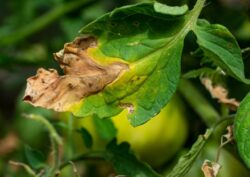
What Are Phytopathogenic Fungi?
Phytopathogenic fungi are eukaryotic organisms that parasitize plants, interfering with their physiology and structure, thereby causing disease. Unlike saprophytic fungi, which feed on dead organic matter, phytopathogens invade living tissues to extract nutrients. Their lifestyles may be biotrophic (requiring living tissue), necrotrophic (killing tissue to feed), or hemibiotrophic (a combination of both).
These fungi spread through spores—resilient structures that can travel via air, water, soil, or vectors. Their life cycle includes spore germination, host penetration, tissue colonization, and the production of new spores. Climatic conditions, such as humidity and temperature, strongly influence their development.
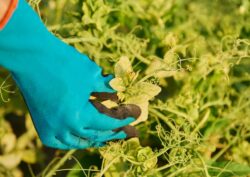
Major Fungal Diseases and Affected Crops
Downy Mildew
Caused by oomycetes of the Plasmopara and Peronospora genera, downy mildew is not caused by true fungi but behaves similarly and is grouped with them due to its pathogenic characteristics.
Symptoms include yellowish spots on the upper side of leaves and a white or grayish mold on the underside. It affects crops such as grapevines, lettuce, onions, and potatoes, often causing significant losses. High humidity and moderate temperatures favor its development.
Powdery Mildew
Caused by fungi of the Erysiphales order, such as Erysiphe necator and Podosphaera xanthii, powdery mildew appears as a white powder on leaves, stems, and fruits. It is common in grapevines, cucurbits, solanaceous crops, and ornamental plants.
This disease reduces photosynthesis, deforms fruits, and can cause defoliation. It develops best in dry environments with high nighttime humidity, making it a threat even in arid climates.
Rust
Rust diseases—such as Puccinia graminis (wheat stem rust) and Hemileia vastatrix (coffee rust)—have complex life cycles, often involving alternate hosts. They appear as orange or brown pustules on leaves, stems, or fruits.
These diseases are highly destructive and can spread rapidly under favorable conditions, destroying entire fields. For example, coffee rust has devastated plantations in Latin America, forcing varietal replacement and new management strategies.
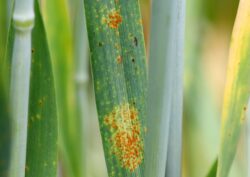
Late Blight
Although Phytophthora infestans is an oomycete, it causes one of the most devastating diseases for potatoes and tomatoes. It results in dark, water-soaked spots on leaves and tubers, often followed by rot.
Late blight is a major threat, especially under rainy and persistently humid conditions.
Fusarium Wilt
Fusarium wilt is caused by various species of the Fusarium genus, such as F. oxysporum and F. graminearum. These diseases affect roots, stems, and spikes, depending on the crop.
Fusarium can lead to wilting, root rot, and the production of mycotoxins, contaminating grains like wheat, corn, and rice. These toxins—such as fumonisin and deoxynivalenol—are hazardous to both human and animal health.
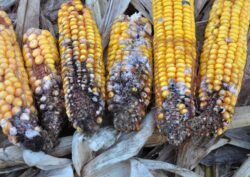
Root and Collar Rot
These symptoms are common in crops affected by Rhizoctonia solani, Pythium spp., and Sclerotinia spp. Young plants are particularly vulnerable, and infection often leads to damping-off or sudden wilting.
These diseases affect seedbeds and horticultural crops, particularly when soil drainage is poor or planting density is high.
Anthracnose
Anthracnose is a common disease in horticultural and fruit crops, mainly caused by Colletotrichum species. It affects leaves, stems, and fruits, causing sunken, dark, necrotic lesions.
It is particularly serious in mango, avocado, strawberry, and papaya. Control is challenging due to the fungus’s ability to survive in plant debris and infected seeds.
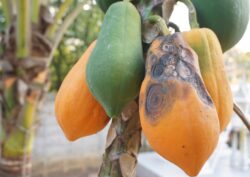
Economic and Social Impact
Fungal diseases can reduce crop productivity by 10% to 30%, depending on the pathogen and environmental conditions. In some cases, such as late blight, losses can exceed 60% if not properly controlled.
In addition to yield losses, these diseases raise production costs due to the intensive use of fungicides and management practices. In export crops, economic losses may also include trade restrictions due to pesticide residues or mycotoxin contamination.
On a social level, fungal diseases can exacerbate food insecurity, especially in regions where small-scale farmers lack the resources for proper disease control. This underscores the need for sustainable and accessible management approaches.

Control and Prevention Strategies
Chemical Control:
Fungicides are a widely used and effective method for controlling many fungal diseases. However, indiscriminate use can lead to resistance, environmental pollution, and health risks. Product rotation and rational use—based on monitoring and action thresholds—are recommended.
Cultural Control:
This includes crop rotation, removal of plant residues, irrigation control, managing planting density, and improving soil drainage. These practices help reduce favorable conditions for fungal proliferation.
Genetic Resistance:
Developing disease-resistant varieties is one of the most sustainable plant protection methods. However, new pathogen strains can overcome resistance, requiring continuous breeding efforts.

Biological Control:
Using antagonistic microorganisms such as Trichoderma spp. or Bacillus subtilis has proven effective against several phytopathogenic fungi. This strategy is part of integrated pest management and is especially useful in organic agriculture.
Early Diagnosis and Monitoring:
Timely identification of symptoms and constant monitoring enable action before diseases spread. Modern technologies—such as PCR, remote sensing, and artificial intelligence—are enhancing these capabilities.
Preventive Control:
Neem oil can be used in agriculture as a preventive measure against fungal incidence thanks to its bioactive compound Azadirachtin, which has antifungal properties. When applied as a foliar spray, it creates a protective barrier on leaves that inhibits spore germination and the development of phytopathogenic fungi such as Fusarium, Alternaria, and powdery mildew. Its regular use—especially in early crop stages or under humid conditions—helps reduce disease pressure without harming beneficial organisms. This makes it an effective option within agroecological and organic production programs.
To learn more about Neem Oil, visit: https://www.ferti-organic.com/products/ferti-neem-oil
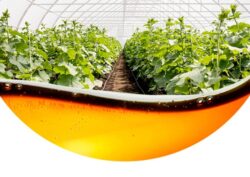
Phytopathogenic fungi represent an ongoing threat to global agriculture. Their diversity, adaptability, and ease of spread make fungal disease control a complex challenge. However, through integrated management that combines chemical, biological, genetic, and cultural strategies, their impact can be sustainably reduced.
Investing in research, agricultural education, and diagnostic technologies is essential to address these challenges. Only by doing so can we ensure crop health, food security, and the resilience of agricultural systems in the face of global changes.
In today’s agriculture, where the quality and health of your crops make all the difference, Ferti Organic products stand out for their proven quality and unique properties.
Contact us today and let us help you find the ideal product for your crops.
Frequently Asked Questions about Phytopathogenic Fungi in Agriculture
What are phytopathogenic fungi and how do they affect crops?
Phytopathogenic fungi are organisms that parasitize plants, interfering with their physiology and structure, which leads to diseases. They can reduce yields, deteriorate product quality, and increase production costs. Their incidence can compromise food security and agricultural economies, especially in developing countries.
What are the main fungal diseases and oomycetes that affect crops?
The most common diseases caused by phytopathogenic fungi include rust, powdery mildew, fusariosis, anthracnose, and root or stem rot. Additionally, some diseases, such as downy mildew and late blight, are caused by oomycetes, which, although not true fungi, behave similarly and have significant impacts on crops.
How can fungal diseases in crops be prevented and controlled?
An integrated management approach is recommended, combining agricultural practices such as crop rotation, proper drainage, and removal of plant residues, along with the selection of resistant varieties and biological control using antagonistic microorganisms. Organic products with antifungal properties, such as Neem Oil, help reduce the incidence of these diseases sustainably and safely for organic agriculture.
How does Neem Oil help prevent fungal diseases?
Neem oil contains azadirachtin, a compound with antifungal properties that forms a protective barrier on leaves, inhibiting spore germination and reducing the incidence of phytopathogenic fungi such as Fusarium, Alternaria, and powdery mildew. Regular use supports more sustainable agroecological management without affecting beneficial organisms.
How can I get technical information or guidance on Neem Oil?
You can find detailed information about Neem Oil here.
If you would like personalized guidance on its application in your crops, recommended dosages, or compatibility with other products, email us at info@ferti-organic.com or call (956) 574-8280. We will assist you directly.





 (956) 574-8280
(956) 574-8280 info@ferti-organic.com
info@ferti-organic.com